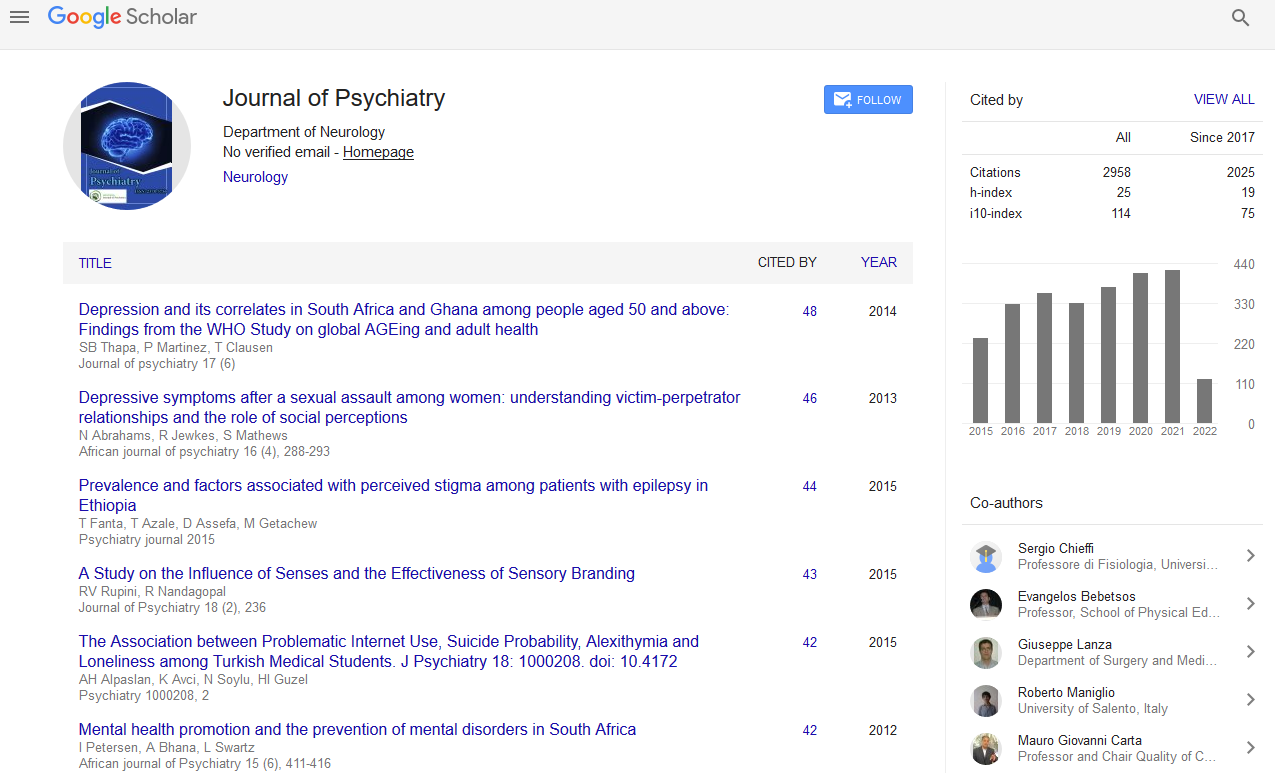PMC/PubMed Indexed Articles
Indexed In
- RefSeek
- Hamdard University
- EBSCO A-Z
- OCLC- WorldCat
- SWB online catalog
- Publons
- International committee of medical journals editors (ICMJE)
- Geneva Foundation for Medical Education and Research
Useful Links
Share This Page
Open Access Journals
- Agri and Aquaculture
- Biochemistry
- Bioinformatics & Systems Biology
- Business & Management
- Chemistry
- Clinical Sciences
- Engineering
- Food & Nutrition
- General Science
- Genetics & Molecular Biology
- Immunology & Microbiology
- Medical Sciences
- Neuroscience & Psychology
- Nursing & Health Care
- Pharmaceutical Sciences
Abstract
Clarifying the Diagnosis of Acute Flaccid Myelitis
Anna Jarrett
Statement of the Problem: Acute Flaccid Myelitis (AFM) is a serious condition that primarily affects children. AFM is a type of Acute flaccid paralysis, a global terms for AFM and non-AFM etiologies. AFM is diagnosed by gray matter abnormalities in the spinal cord on MRI, or pleocytosis in the cerebral spinal fluid. AFM attacks spinal cord gray matter resulting in lower motor neuron injury and flaccid weakness in the extremities. Although the specific cause of most cases is unknown, viruses, toxins and genetic disorders have been implicated. Stopping the spread of viral infections is crucial to preventing this potentially disabling disease. Simple prevention measures to stress to all patients are: a) hand hygiene by washing your hands, b) control respiratory droplets by coughing/sneezing into your sleeve and then wash your hands, c) stay current with your immunizations, and d) stay away from those who are ill. Identifying patients with AFM is difficult. If suspected, it is important to act quickly with the assistance of local or state health departments in collaboration with the Centers for Disease Control and Prevention (CDC) to determine the causative factor. The CDC provides up-to-date information. Treatment has been unsuccessful using conservative measures, but there is hope for nerve transfer procedures in upper and lower extremities using microsurgery techniques. This is an unfolding story with more to come if this disease cannot be controlled or eradicated.
Published Date: 2020-08-29; Received Date: 2020-08-05


